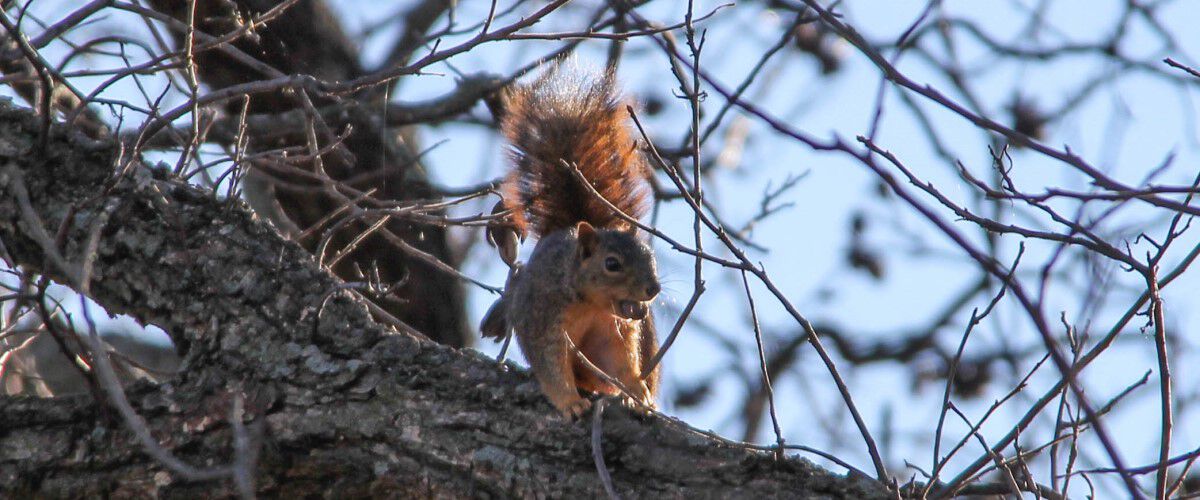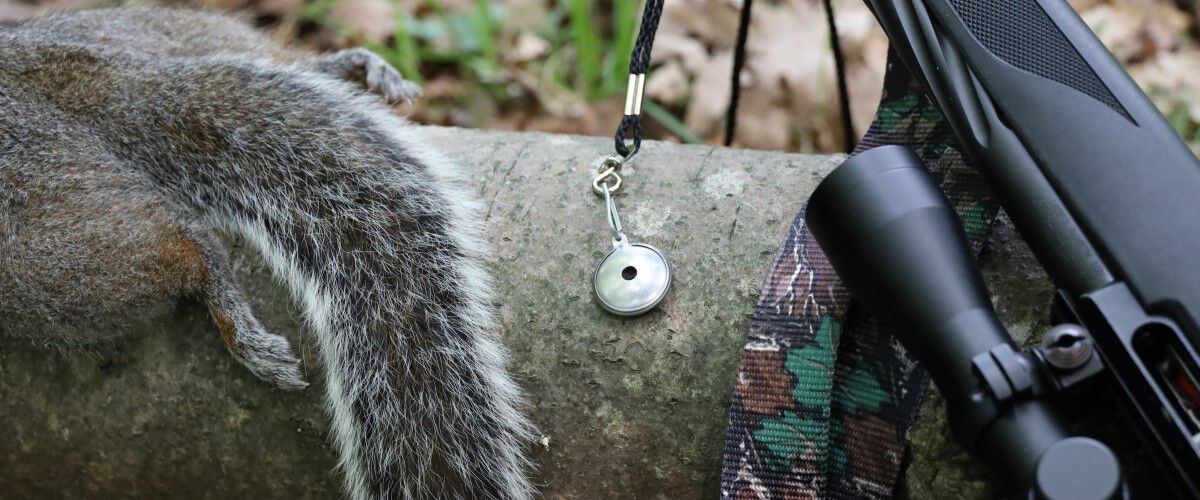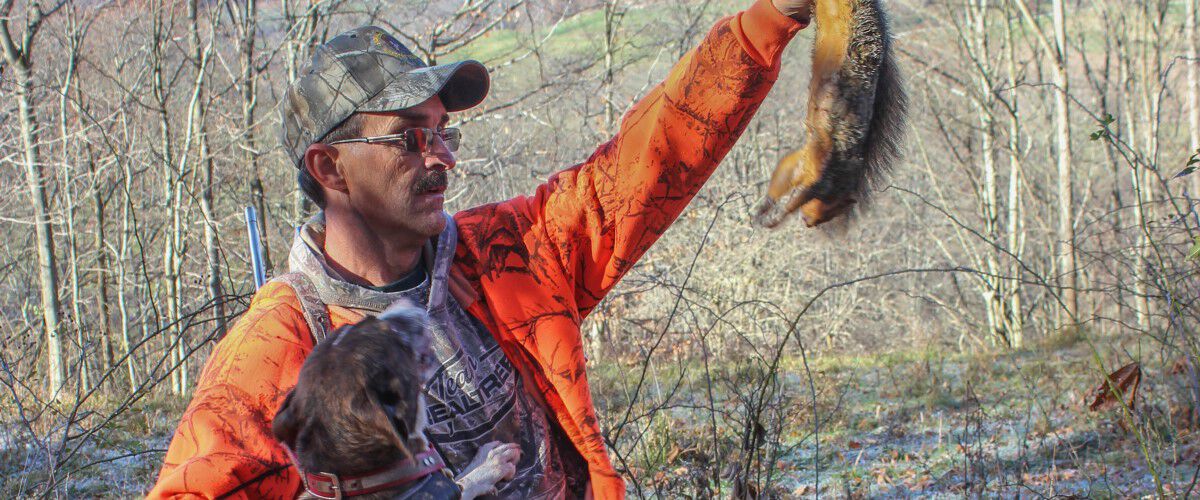Bushytail Basics
By Brad Fitzpatrick

The first game animal I hunted was a fox squirrel I killed on my family’s farm using my grandfather’s .410 shotgun. Since then, I’ve hunted big game on several continents, but I can still remember the details of that October morning and the excitement I felt when the squirrel appeared on a hickory limb just above my head. Some of that excitement remains every time I head to the squirrel woods.
There’s been a major initiative to recruit hunters across the United States over the last two decades, and there’s no animal that’s a more appropriate first target for new hunters than squirrels. They’re abundant and active during the day and they make excellent table fare when properly cooked. On almost any patch of public land with standing woods you’ll find at least a few squirrels.
North American Squirrel Species
There are almost 300 members of the squirrel family, or Scuiridae, which includes ground squirrels, chipmunks, woodchucks, marmots and tree squirrels. Most familiar and widespread are the tree squirrels. Five primary species of tree squirrels are hunted in North America, and these include the eastern and western gray, fox squirrel, red squirrel and black squirrel. Each utilizes different habitat but all rely on trees for cover and forage.
Understanding habitat types is important to finding squirrels. In the eastern United States, the two primary squirrel species are fox and the eastern gray. Fox squirrels prefer broken habitat and are often found on the edges of farm fields, whereas gray squirrels prefer hardwoods (although their ranges do overlap). Red squirrels also prefer forests and are frequently found in pine woods. Regardless of species, productive squirrel habitat has two key ingredients: trees and food.
Oftentimes that food is mast crops such as hickory. In my home state of Ohio (and throughout much of the eastern United States), hickory nuts are a favorite food source in the fall, so learning to identify hickory trees will help pinpoint productive hunting areas. But squirrels also forage on walnuts, acorns and other tree nuts, so a bit of pre-season scouting will help you find other productive locations.
Methods
Most squirrel hunters simply find a comfortable tree with squirrel sign nearby and wait for the animals to show themselves. Squirrels are also quite vocal and be called in using a whistle that mimics the distress cry of a squirrel. But you don’t always need a call to bring squirrels out of hiding. After allowing the area you’re hunting to settle (usually 20 to 30 minutes after you arrive) you can mimic the sound of a feeding squirrel by dropping your hand into the leaves every 15 to 30 seconds. That thumping of leaves makes other squirrels believe the danger has passed and feeding has resumed, and they are more likely to show themselves.

There’s no need to spend all your time sitting still, though. Walking and drifting rivers in a canoe or kayak are productive, but they require focus and attention. Watch for squirrels on the ground and in the trees, and listen for the thrashing of dry branches as squirrels move along limbs. When you’re moving there’s a chance the squirrels will spot you first and freeze, and waiting them out will require extreme patience. I’ve seen squirrels remain motionless for over an hour waiting for danger to pass.
Dog Work
My favorite method is using dogs, and the sport is growing in popularity across the country. Mountain and blackmouth curs and feists, breeds developed in the United States by early American settlers, are the ideal squirrel dogs. A well-trained cur or feist can tree several squirrels an hour, and these dogs primarily rely on sight instead of scent like hounds. Most curs and feists are silent on the trail (another way they differ from hounds) and only bark when the squirrel is treed. If your dog turns out to be proficient at finding bushytails, you can enter in registered squirrel hunts to win prizes and earn titles for your canine hunting companion. Competition squirrel hunts are also a great way to learn about squirrel hunting with dogs and meet local breeders. Curs and feists aren’t the only dog breeds that tree squirrels, either: I know hunters who’ve trained Jack Russell terriers, border collies, English and bluetick coonhounds, fox terriers and other breeds.

Guns & Ammunition
A rimfire rifle is all that’s required to hunt tree squirrels, but your gun and ammunition must be accurate. I prefer a scoped rifle because it offers a bit more precision and reach, and my goal is to place my shots carefully so that there’s no suffering on the part of the animal and that none of the meat is ruined.
Consistent performance on small game requires quality ammunition. If you’re looking for something a bit quiet (always a good idea so you don’t spook game or give away your hunting spot on public land) then look to CCI’s Suppressor, Sub-Sonic HP and Quiet-22 Segmented HP ammunition. You can also use more powerful rimfire loads like CCI’s Gamepoint 17 HMR and 22 WMR loads, and these are the loads of choice for those who live in the west and hunt ground squirrels, since they can reach out across open areas without a lot of recoil or muzzle blast. Regardless of the ammo you choose, always identify your target carefully and know what lies beyond it.
Squirrel hunting is often viewed as the gateway into big game hunting, but I still enjoy an afternoon spent huddled under a hickory trees as much as I used to. My 5-year-old son is ready to start his own hunting career, and you can bet bushytails will be the first animal he pursues.